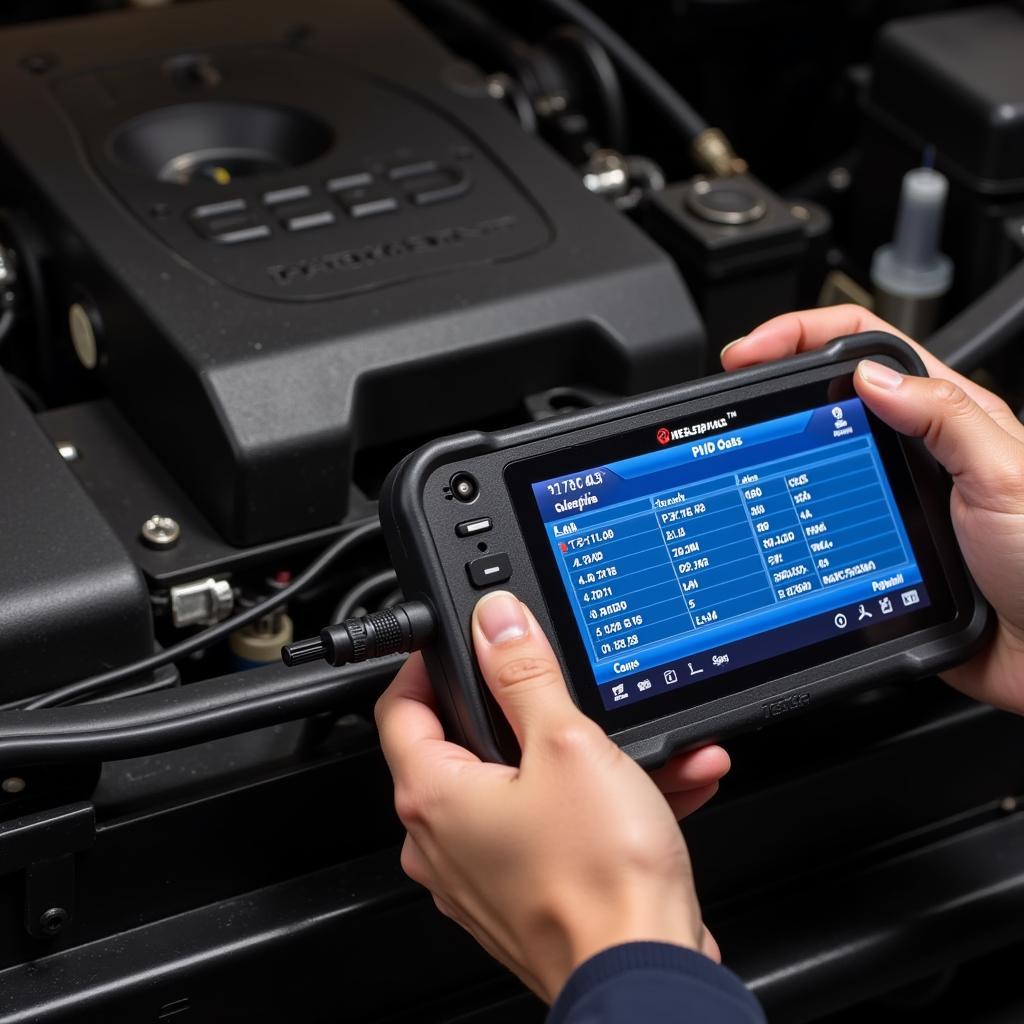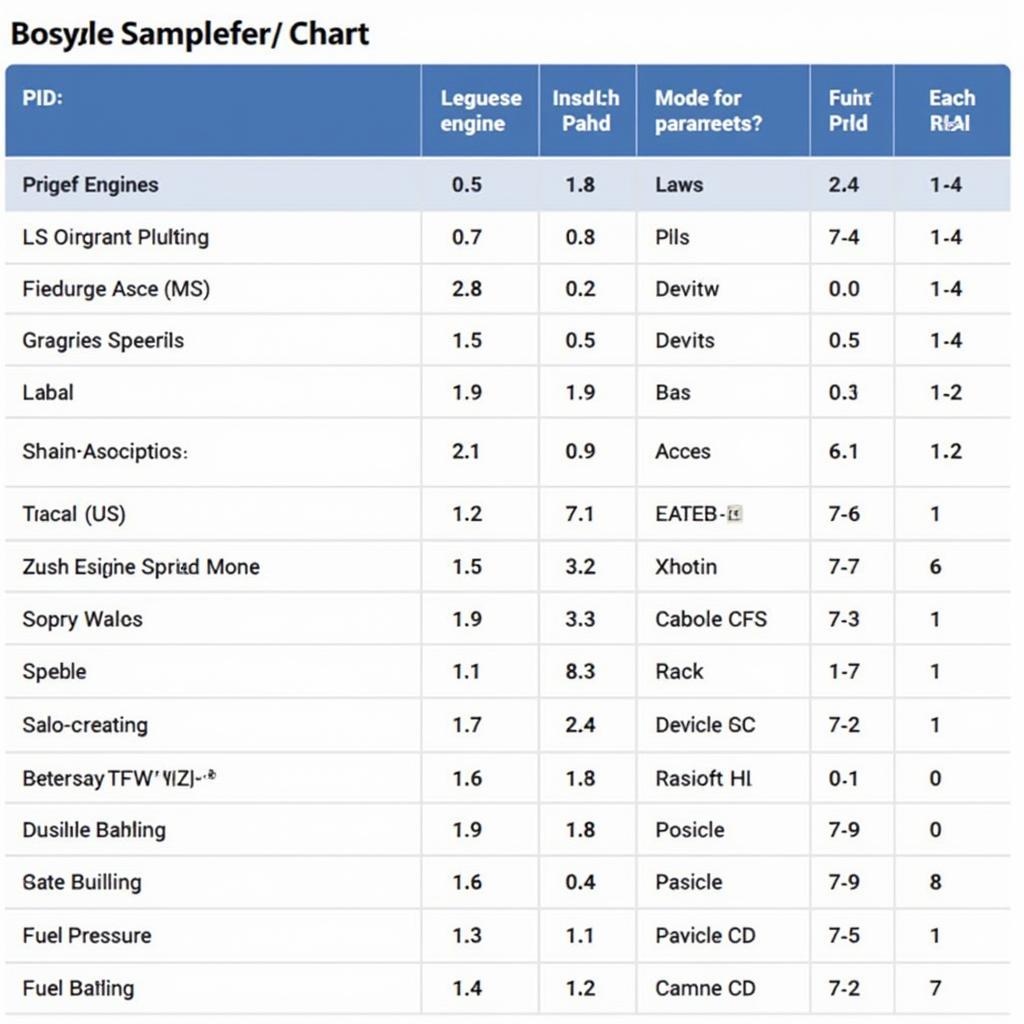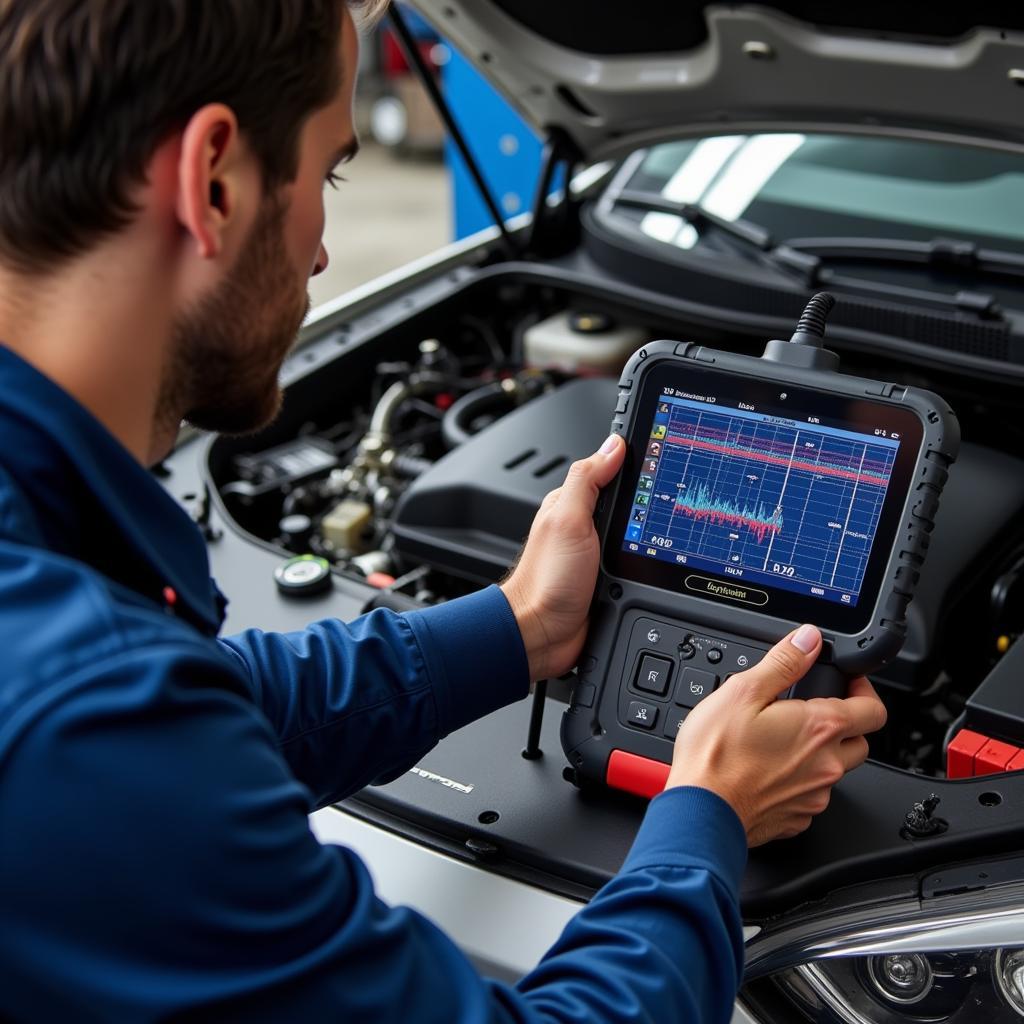Automotive scan tools are invaluable for diagnosing vehicle problems, and understanding PID diagnostics is crucial for using them effectively. This comprehensive guide will explain everything you need to know about PID diagnostics, from its basics to advanced applications.
What are PID Diagnostics?
PID (Parameter Identification) diagnostics involve retrieving and analyzing data from a vehicle’s electronic control units (ECUs) using a scan tool. These data points, known as PIDs, provide valuable insights into the vehicle’s performance and can help diagnose problems.
Imagine trying to troubleshoot a computer without being able to see what’s going on inside. That’s where PID diagnostics come in. They give you a window into the vehicle’s internal systems, enabling you to see what’s happening and identify potential issues.
The Importance of PID Diagnostics
PID diagnostics are essential for:
- Identifying and diagnosing vehicle problems: By monitoring PIDs, you can identify potential issues before they become major problems, saving you time and money.
- Understanding vehicle performance: PIDs provide valuable data on the vehicle’s engine, transmission, brakes, and other systems, helping you understand how well the vehicle is performing.
- Troubleshooting complex problems: PID diagnostics are particularly useful for troubleshooting complex problems that may not be easily identified through traditional diagnostic methods.
Understanding PID Codes and Data
Each PID has a specific code and provides information about a specific aspect of the vehicle’s operation. These codes are standardized across different vehicle manufacturers, making it easier for mechanics to understand and interpret the data.
Think of PIDs like the different channels on a TV. Each channel provides a different view of what’s happening, and you can use this information to understand the overall picture.
How to Use PID Diagnostics with a Scan Tool
Using PID diagnostics with a scan tool is a straightforward process:
- Connect the scan tool to the vehicle’s diagnostic port. This is usually located under the dashboard.
- Select the desired vehicle system. Most scan tools have a menu that allows you to select the system you want to analyze, such as the engine, transmission, or ABS.
- Select the desired PIDs. You can choose from a list of available PIDs for the selected system.
- View and analyze the data. The scan tool will display the real-time data for the selected PIDs.
Think of it like watching a live feed from inside the vehicle’s systems. This information can help you understand what’s happening and identify potential issues.
Interpreting PID Data
Interpreting PID data can be challenging, especially for beginners. There are many different PIDs available, and each one has its own unique meaning.
- Understanding PID definitions: Most scan tool manuals provide detailed definitions of each PID, along with their typical values and what they mean.
- Using PID charts: Several online resources and software programs offer PID charts that can help you interpret data from different vehicle manufacturers.
It’s like learning a new language, but with practice, you can become fluent in interpreting the information from PIDs.
Advanced PID Diagnostics
Advanced PID diagnostics involve using more sophisticated scan tools and techniques. These can include:
- Live data streaming: This allows you to see real-time data from multiple PIDs, providing a comprehensive overview of the vehicle’s operation.
- Graphing PID data: Graphing data can help you visualize trends and identify problems that may not be apparent in numerical data.
- Logging PID data: Logging data allows you to record and analyze information over time, which can be helpful for diagnosing intermittent problems.
Think of these advanced tools like having a high-powered microscope to look deeper into the vehicle’s inner workings.
Real-World Applications of PID Diagnostics
PID diagnostics have numerous applications in automotive repair and maintenance. Here are some examples:
- Troubleshooting engine misfires: PID diagnostics can help identify misfires and determine the cause, such as faulty spark plugs, ignition coils, or fuel injectors.
- Diagnosing transmission problems: PIDs can provide data on transmission fluid temperature, line pressure, and shift timing, aiding in diagnosing transmission issues.
- Monitoring fuel economy: PIDs can track fuel consumption and help identify areas for improvement, such as driving habits or engine performance.
“The Power of PID Diagnostics”
“PID diagnostics are like having a super-powerful magnifying glass for your vehicle. They give you a clear and detailed view of what’s going on under the hood, making it much easier to diagnose problems and ensure your vehicle is running smoothly.” – John Smith, Master Mechanic
Frequently Asked Questions
Q: Do I need a special scan tool to use PID diagnostics?
A: While basic scan tools can access some PIDs, more advanced tools are required for accessing a wider range of PIDs and performing advanced diagnostic procedures.
Q: How do I find the definitions for specific PIDs?
A: Most scan tool manuals, online forums, and specialized software programs offer detailed definitions for different PIDs.
Q: Can I learn to use PID diagnostics myself?
A: With proper training and resources, you can learn to use PID diagnostics effectively. However, it’s important to consult with a qualified mechanic if you’re unsure about any aspect of the process.
Q: Are there any risks associated with using PID diagnostics?
A: While PID diagnostics are generally safe, it’s important to follow the manufacturer’s guidelines and exercise caution when modifying vehicle settings.
Q: How do I find the right scan tool for my needs?
A: Consider factors such as compatibility with your vehicle, the specific PIDs you need to access, and the advanced features you require.
Q: What are some good resources for learning more about PID diagnostics?
A: Several online forums, specialized websites, and training courses offer information and guidance on PID diagnostics.
Conclusion
PID diagnostics are an indispensable tool for any serious automotive enthusiast or mechanic. By understanding how to use and interpret PID data, you can gain valuable insights into your vehicle’s operation, identify potential problems, and ensure optimal performance.
While it might seem daunting at first, mastering PID diagnostics can significantly enhance your ability to diagnose and troubleshoot automotive issues.
Start your journey into the world of PID diagnostics today!
 Using a Scan Tool for PID Diagnostics
Using a Scan Tool for PID Diagnostics
 Understanding PID Data
Understanding PID Data
 Advanced PID Diagnostics
Advanced PID Diagnostics
For further assistance or to answer any specific questions you may have, please contact our team of experts:
WhatsApp: +1(641)206-8880
Email: [email protected]
Address: 276 Reock St, City of Orange, NJ 07050, United States
We are here to assist you 24/7 with any automotive diagnostic needs.


